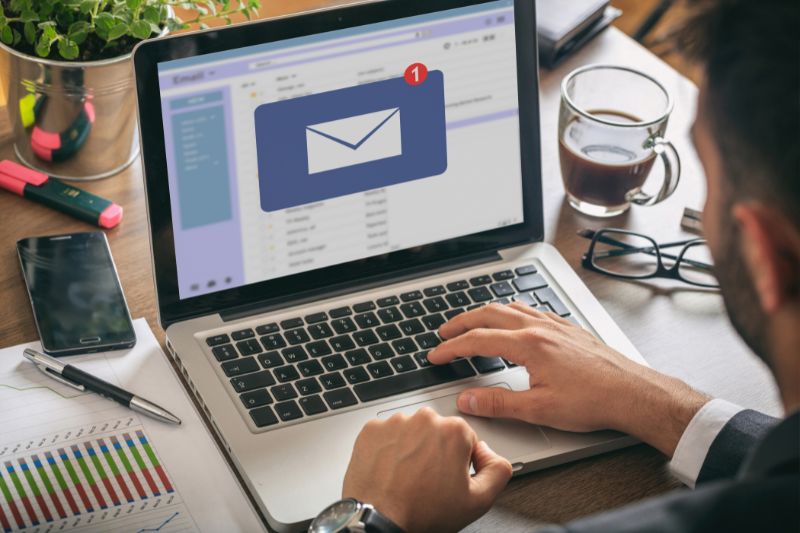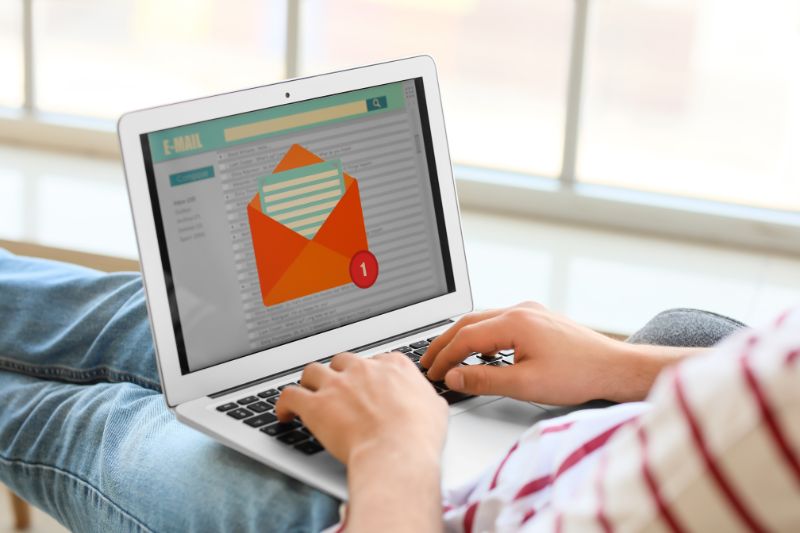One way to determine the success of your email marketing campaign is by checking the open rate.
It’s an important metric that gives you a clear picture of the several critical aspects of your email marketing approach.
For instance, it tells you if your recipients are interested in what you offer or say. It also gives you an idea about how your customers perceive your brand and the quality of your newsletters.
Do they see it as something interesting or helpful from a trusted source, or do they view it as a nuisance?
So, if your campaigns have a low open rate, it’s a wake-up call that you may fail to catch your subscribers’ attention or not send your emails at the right time. Worse, your email is landing in spam instead of inbox.
But, in our experience, not all email campaigns are created equal.
Aside from email design, other elements affect open rates, such as sender recognition, urgency, the relevance of the content and subject line and time of day.
Interested in getting more people to open your email? We’re happy to introduce these tips on increasing your email open rates. But before we jump into the full details, allow us to cover the basics first, starting with:
What’s a Good Email Open Rate?
Although every industry’s open rates will differ, here are a few averages from leading service providers:
- Constant Contact: 17.13%
- Campaign Monitor: 18.0%
- HubSpot: 20.94%
- MailChimp: 21.33%
- GetResponse: 22.15%
Depending also on the industry which you’re in, the overall average email open rate should be somewhere between 12 and 25%. Understanding the email marketing advantages and disadvantages can further help refine strategies to achieve better open rates.
For instance, if you’re in the health and beauty industry, the average open rate is 23.58%. However, if you’re in the food or restaurant industry, you should expect a higher rate (41.37%).
Note that this metric is not determined by the number of emails delivered but by the number of emails opened.
Here is how we calculate the email open rate:
Open rate = unique opens/(sent emails – bounced emails) x 100
Does it really matter?
Some marketers think that open rates are given more attention than they are due and that it is not even an accurate measure of the number of people who opened and read your emails.
However, we believe it does matter. Why? Conventional wisdom will tell you that if an email has not been clicked or opened, what’s the point of investing time, effort, and money into your campaign?
Keep in mind that the end goal of your email campaigns is for people to click the call-to-action (CTA). If your email is opened and has higher engagement, it means the more significant your ROI will be. So, along with email open rates, click through rates should also be closely monitored.
Now that you understand what a good email open rate is, you will have a better idea of how your email campaign is performing. Let’s now find out the ways to increase email open rates.
Gain insights into your email campaign’s performance. Track real-time progress with InboxAlly’s intuitive dashboard. Click now to start monitoring and optimizing!
11 Email Marketing Strategies to Increase Open Rates
1. Invest In Your Email Subject Line
Your email subject line is your hook to your audience, so you should write it in a way that triggers curiosity or urgency.
We bet you’re swamped with emails, too, daily. You probably don’t have all the time in the world to open them all? I bet you would first open those that immediately grab your attention.
That’s what you should be using in your email marketing campaign, too, if you want to increase your open rate.
But be careful; avoid cheap tricks to have your email opened. You may benefit from using bait-and-switch subject lines in the short term, but in the long run, this trick won’t be sustainable for your campaign.
Not to mention, it damages your brand and disrespects your subscribers. If you’re in the US, using deceptive subject lines is illegal.
Some tips to craft a compelling subject line include using odd numbers, getting the essential phrases and words at the beginning of your subject line, keeping it short, using power words, drawing your audience with mystery, asking a question, and going easy on punctuation and exclamation points.
2. Use a Personal Sender’s Name
Besides the subject line, the sender’s name is also one of the most essential factors in getting your emails opened.
Having a proper name clarifies the purpose of the email rather than the “no-reply” email address.
It may seem an excellent way to avoid out-of-office notifications or clogging up inboxes, but remember that email marketing requires mutual trust between the sender and the target audience or recipient.
If the sender uses their name, the campaign is more personal, which makes it more likely to be opened. How about you? What sender name do you use in your email campaign?
3. Keep Your Email List Clean
If the recipient didn’t ask for your newsletter or isn’t expecting it, they’re unlikely to click or open your email. You can even expect high spam complaints and unsubscribe rates!
Therefore, we encourage email marketers to keep their contact lists clean and filled with engaged subscribers. Then, periodically remove the inactive subscribers or re-engage them using a win-back email campaign.
For instance, HubSpot used this in their subject: “Should I Stay or Should I Go?” If you’re feeling gutsy, you may use the subject line “Do I bore you?” or “Is the love gone?”
Removing those who don’t open your emails after the re-engagement campaign will help improve your open rate.
4. Segment Your Audience or Subscribers
It’s not easy to appeal to a broad audience. Imagine telling a story to ten people. You know these people by name; you can tailor what you are saying to appeal to them, and you can gauge their reactions.
Yet, it’ll be challenging when you have a bigger audience. You can keep telling your story, but tracking what each of them genuinely wants to hear becomes harder.
If half of your audience realizes that the message is not relevant to them, there’s a chance that they’ll tune out. The same applies to email marketing.
The good news is that segmenting your email list will help you increase your email open rates, proven! Why? It’s because it allows you to send personalized emails.
Some email marketers segment their subscribers based on their likes, dislikes, desires, or pain points. Others group their audience by the content upgrade they opted for.
Finally, you can use behavioral segmentation to group your subscribers based on their behavior on your website. For instance, a particular email is sent to those who visit a specific page.
Bonus tip: Segment based on account engagement or recent order activity rather than email list performance. For example, thousands of subscribers may open and read your emails, but they never buy. You can segment them instead based on product interest, gender, location, or type of email.
5. Avoid the Spam Filters
Certain words can trigger the spam filter set by any email service provider. As such, it should be your top priority to be familiar with these words and find a way to outsmart them.
Some words that can land your emails in spam folders and eventually affect your sender’s reputation include “free,” “special promotion,” “winner, “order now,” this is not spam,” and “cancel at any time.”
You may suggest to your loyal customers that they whitelist you by adding your email address to their contacts or pay attention to phrases that set off a red flag when creating your preview text, subject line, and email content.
6. Take Advantage of the Power of an Email Preheader
Preheader text is considered to be the unsung hero of open rates. This is the sentence that appears in the inbox after the subject line.
You may only have a few words for this part of your email, but it can lift your open rate. So, as you should take time on your subject line, do the same with your email preheader.
The main goal is to make your email preheader complement the subject line. For instance, if your subject line asks a question, a preheader should start answering it.
If you don’t write them yourself, these bits of text can be automatically added to your emails by the email service providers. However, it may not be the phrase you want to highlight.
7. Make Your Email Mobile-Friendly
You can’t ignore mobile users when creating an email if you want to increase your campaign’s open rate and improve deliverability.
Aside from keeping your subject line short, some appealing tips for those opening marketing messages on mobile devices include keeping the format single-column and under 600px wide.
Moreover, using smaller images is better to lessen the load time. Don’t assume photos are displayed in the email, as Android turns off images by default. So, ensure your email looks good without the image or use alt text instead.
8. Write Your Email in a Personal Tone
Every inbox can be a combination of personal and marketing emails. Simply put, your email clients may subconsciously filter emails from companies or people.
To improve your email open rates, write your email personally. This puts you away from the trash.
Aside from writing in a personal tone, you may also use people’s pictures to have a better opportunity to connect to your audience. This is one way to humanize your email.
They’re also great for homepages, contact pages, social media profiles, and landing pages.
9. Find the Optimal Time to Send Your Emails
You could be using the perfect subject line, but if you’re not sending on the right day of the week or time of day, you may still have a low email open rate.
Generally, the optimal time of day to send a message to your email subscribers is 10 AM in your recipient’s time zone. But if you look deeper, the type of content you’re sending matters too, as well as the recipient’s occupation, age, and location.
For instance, hobby-related emails may be checked before work, but work-related emails are more likely to open during work hours.
So, think carefully about your timing. You won’t be able to figure this out immediately, but by doing some A/B test, you can determine which timeframes your emails perform best and use that in future campaigns.
Timing is key in email marketing. With InboxAlly, control the opening time window for your emails to hit the inbox at the perfect moment. Start optimizing your send times now!
10. A/B Test Different Subject Lines
Speaking of the A/B test, this guide on how to increase email open rates of your email campaigns won’t be complete without encouraging you to A/B test your campaign.
Running A/B tests is one of the most exciting and efficient methods to achieve email marketing success.
Compare your email subject lines to know which converts better with a particular group of audience. Often, personalized subject lines have better results.
Did you also know the number of characters you use in your subject line matters? Yup. The excellent balance is somewhere between 25 and 30 characters.
Ready to learn more? Here are 30 email marketing tips from experts in different industries for people embarking on email marketing campaigns!
11. Check Your Sender Reputation
Your sender reputation is like a credit score for your email program, influencing how email service providers (ESPs) treat your messages. A good sender reputation means your emails are more likely to bypass the spam filters, ensuring higher deliverability rates.
To maintain or improve this reputation, regularly monitor your email bounce rates, complaint rates, and engagement metrics.
Tools like InboxAlly provide insights into your sender reputation, helping you identify and rectify issues that could lead to blacklisting or poor deliverability. Remember, a robust sender reputation is your ticket to ensuring your emails consistently reach their intended inboxes.
You Can Reignite Your Open Rates!
There you have it! We’ve provided ways to increase your email open rates, so we hope it could help you make actionable decisions about your email campaigns.
Here are key points to take away:
- When it comes to email marketing open rates, subject lines are everything.
- The segmented list saw more excellent open rates.
- Crafting your email as if you’re writing to a person with a personalized message is more effective.
- Optimize your campaigns for mobile.
- Perfect your timing when sending your emails.
Are you searching for an email deliverability tool to increase your open, deliverability, and conversion rates? Give InboxAlly a try!




